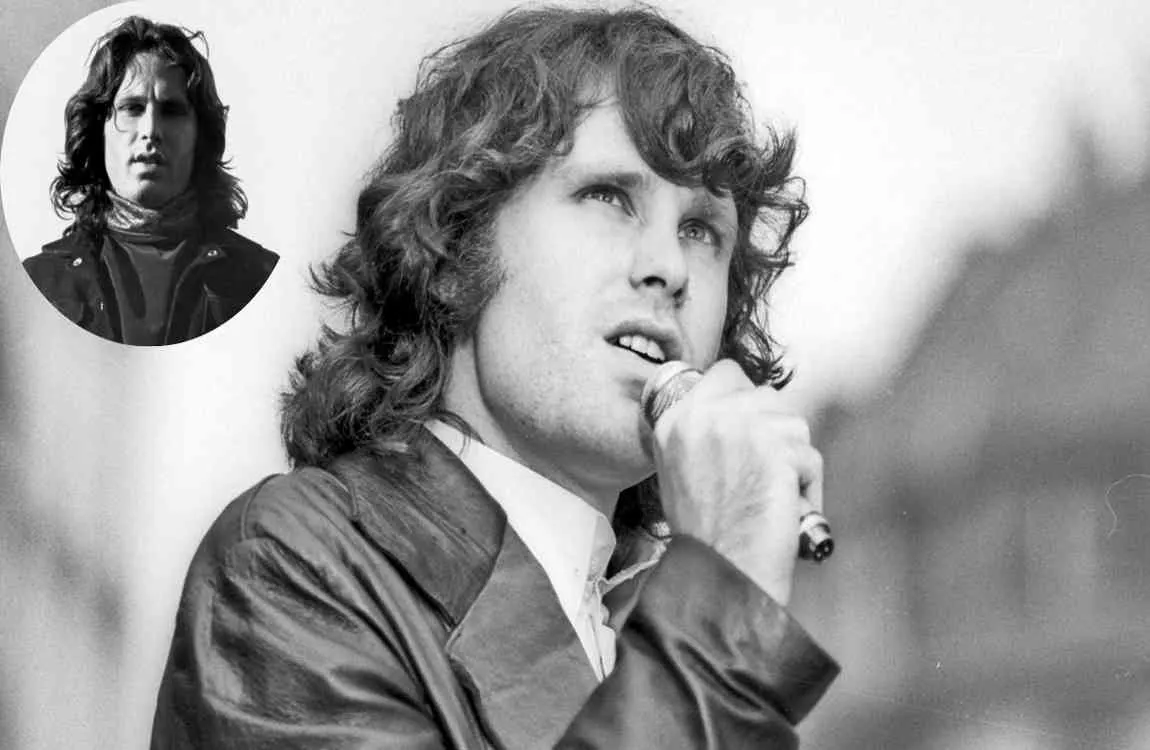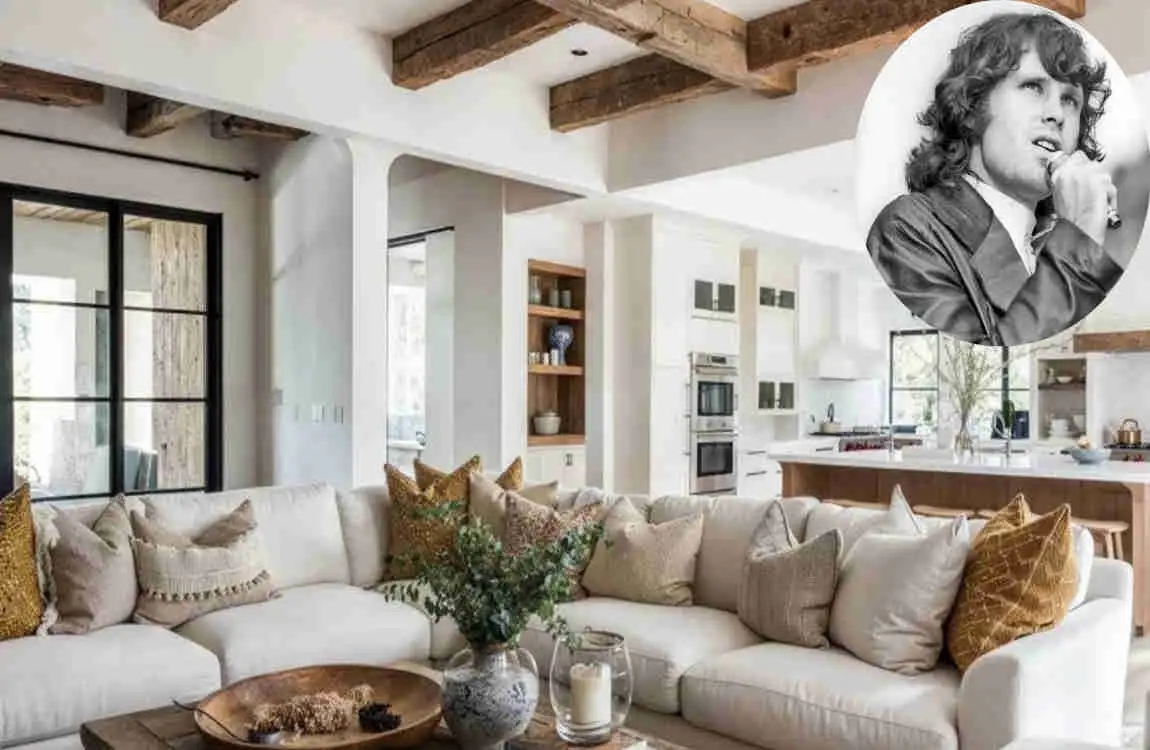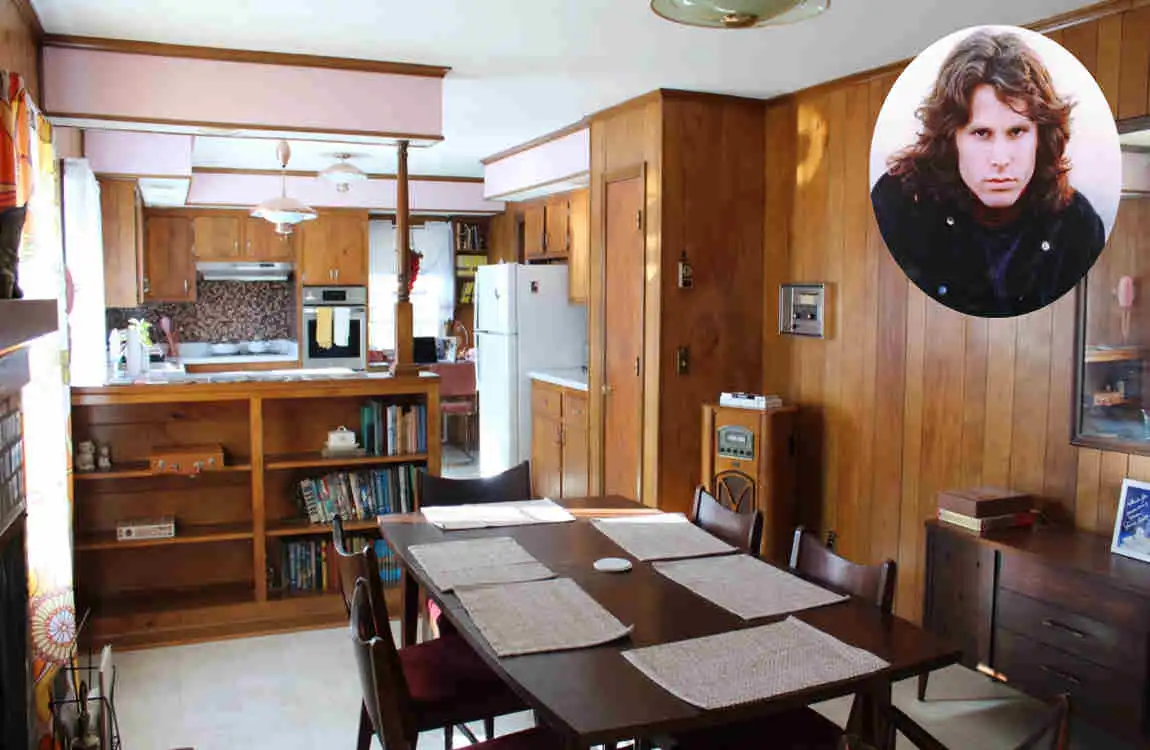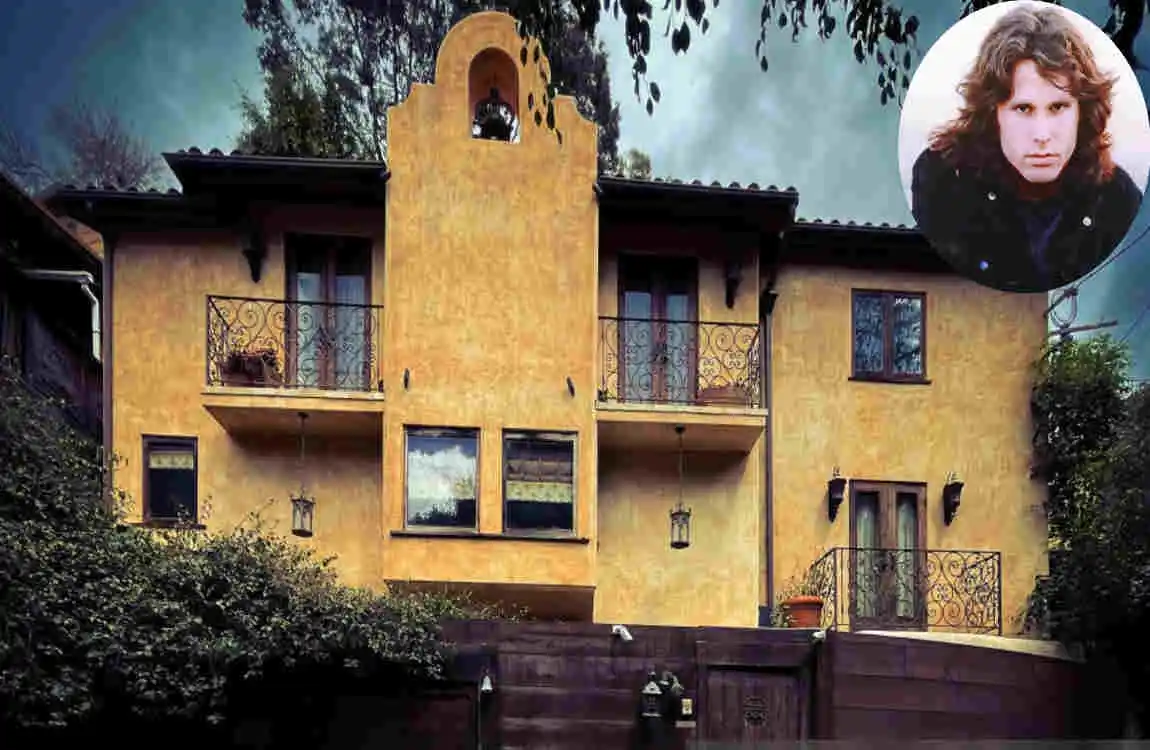Have you ever wondered what it would be like to step inside the modern home of a rock legend? Jim Morrison, the electrifying frontman of The Doors, lived a life shrouded in mystery and rebellion. His music still echoes through time, captivating new generations. But to truly understand the man behind the Lizard King persona, we need to peek into his personal spaces. That’s where the story of the Jim Morrison house comes alive. These weren’t just buildings; they were extensions of his wild spirit, poetic mind, and chaotic lifestyle.
| Attribute | Information |
|---|---|
| Full Name | James Douglas Morrison |
| Birth Date | December 8, 1943 |
| Birth Place | Melbourne, Florida, USA |
| Death Date | July 3, 1971 |
| Death Place | Paris, France |
| Occupations | Singer, songwriter, poet, lyricist, musician, film director, actor, screenwriter |
| Famous For | Lead vocalist and lyricist for The Doors |
| Known For | Iconic rock singer, rebellious stage persona, poetic lyrics |
| Net Worth at Death | Approximately $400,000 (around $3 million in 2025 USD adjusted for inflation) |
| Estate Value Today | Over $80 million due to royalties, music sales, licensing |
| Current Residence | Deceased (died in Paris, France in 1971) |
| Burial Place | Père Lachaise Cemetery, Paris, France |
From his childhood roots to the bohemian pads in Los Angeles, each place tells a piece of his story. Why does this matter? Because exploring the Jim Morrison house helps us see beyond the stage lights and into the private world that shaped his genius and his downfall.
Who Was Jim Morrison?

Early Life and Roots
Jim Morrison burst onto the scene as more than just a singer—he was a poet, a provocateur, and a symbol of rebellion. Born on 8 December 1943, in Melbourne, Florida, Morrison grew up in a military family. His father was a Navy admiral, which meant constant moves across the U.S. This nomadic childhood planted seeds of restlessness in him. Imagine a young Jim, staring out at new horizons, already dreaming of breaking free from structure.
As a kid, Morrison devoured books. He was passionate about philosophy, literature, and mythology. These influences shaped his worldview long before he ever picked up a microphone. By the time he hit his teens, he was questioning authority and exploring the edges of society. This early life set the stage for the man who’d later make the Jim Morrison house a hub of creative chaos.
Rise to Fame with The Doors
Morrison’s big break came in the mid-1960s when he formed The Doors with keyboardist Ray Manzarek, guitarist Robby Krieger, and drummer John Densmore. They met at UCLA’s film school, where Morrison was studying. Their sound blended rock, blues, and poetry, creating something revolutionary. Hits like “Break On Through” and “Riders on the Storm” captured the spirit of freedom and experimentation that defined the era.
But Morrison wasn’t just a performer; he was a showman. His onstage antics—wild dancing, improvised lyrics, and that infamous Miami incident—cemented his rebel status. Fans adored him, authorities feared him. This fame transformed his personal life, turning every Jim Morrison home into a refuge from the spotlight.
Cultural Impact and Tragic End
Morrison’s influence stretched far beyond music. He embodied the 1960s counterculture, challenging norms on sexuality, drugs, and politics. His poetry books, like “The Lords and the New Creatures,” revealed a thoughtful side amid the excess. People saw him as a modern shaman, drawing from Native American and Eastern philosophies.
Sadly, his life ended too soon. On 3 July 1971, Morrison died in Paris at the age of 27, joining the infamous “27 Club.” Theories swirl about the cause—heart failure, overdose?—but his legacy endures. Exploring the Jim Morrison house helps us connect these dots. It shows how his environments fueled both his brilliance and his struggles.
Why does this matter to you? Think about your own modern home—doesn’t it reflect who you are? Morrison’s did, in profound ways. His story reminds us that icons are human, shaped by their surroundings. As we move forward, let’s examine how his residences contributed to this narrative.
Historical Context of Jim Morrison’s Residences
Childhood Homes and Early Influences
Jim Morrison’s journey through homes started early, thanks to his family’s military lifestyle. They bounced from Florida to California, New Mexico, and beyond. These constant shifts mirrored the instability in his music—always searching, never settled. In Alameda, California, young Jim lived in a modest house near the naval base. It was here that he first rebelled against his strict upbringing.
These early Jim Morrison houses weren’t glamorous, but they sparked his imagination. Surrounded by books and nature, he developed a love for the outdoors and a fascination with mysticism. Historians note how this rootlessness influenced songs like “The End,” with its themes of disconnection. Have you ever moved frequently as a child? It changes you, just like it did for Morrison.
Los Angeles Apartments in the Swinging Sixties
As Morrison chased his dreams in LA, his living situations evolved. He crashed in cheap apartments around UCLA, scraping by as a student. These spots were bare—think cramped rooms filled with second-hand furniture and endless notebooks. But they buzzed with the energy of the era. LA in the 1960s was a hotbed of hippies, artists, and revolutionaries.
One key residence was on Rothdell Trail in Laurel Canyon, a bohemian enclave. Here, Morrison mingled with fellow musicians, absorbing the vibes that would define The Doors. This Jim Morrison home became a creative incubator, where ideas flowed freely amid the canyon’s misty hills. The cultural context? It was the height of the Summer of Love, and Morrison’s spaces reflected that free-spirited chaos.
Venice Beach and Beyond
Venice Beach marked a turning point. This artsy, beachside neighborhood drew misfits and dreamers. Morrison’s time there, especially at the famous Gibson Street house, captured the essence of his rebellious phase. Geographically, it was perfect—waves crashing nearby, inspiring his oceanic metaphors in lyrics.
Culturally, Venice was a melting pot of counterculture. It influenced his work by exposing him to diverse ideas, from beatnik poetry to psychedelic experiences. Other spots, such as his Paris apartment, where he spent his final days, added an international flair. Each Jim Morrison house tied into his development, blending personal growth with broader societal shifts.
Why explore this history? It shows how places shape people. Morrison’s residences weren’t random; they were backdrops to his legend. As we delve deeper, let’s focus on the most iconic one.
The Most Famous Jim Morrison House: Venice Beach

Discovering the Gibson Street Residence
| Attribute | Details |
|---|---|
| Address | Laurel Canyon, Los Angeles, California |
| Architectural Style | Spanish style (vibe described) |
| Specifications | Not explicitly detailed |
| Cultural/Historical Info | Residence of Jim Morrison during The Doors era; inspiration for “Love Street” song |
| Estimated Worth | Not available |
| Additional Info | House featured a secret bathroom with signatures; guitar survived a fire undamaged |
When people refer to the Jim Morrison house, they often mean the one located at 1510 Gibson Street in Venice Beach. Morrison shared this spot with his longtime partner, Pamela Courson, from around 1968 to 1970. It wasn’t a mansion—just a cozy, two-story bungalow typical of Venice’s eclectic vibe. But oh, what stories those walls could tell.
Nestled in a quirky neighborhood, the stunning house sat amid colorful murals and sandy streets. Morrison loved the area’s raw energy, a far cry from polished Hollywood. This Jim Morrison home became his sanctuary during The Doors’ peak fame. Imagine pulling up to a simple wooden exterior, painted in earthy tones, with a small porch perfect for late-night musings.
Layout and Daily Life Inside
Step inside, and you’d find a layout that screamed bohemian. The ground floor had a living room cluttered with books, records, and random artifacts. Morrison wasn’t tidy—friends recall piles of poetry drafts everywhere. Upstairs, the bedroom overlooked the beach, offering views that inspired his introspective side.
The kitchen? A hub for impromptu gatherings. Morrison and Courson hosted friends, such as bandmates and fellow artists. Anecdotes abound: One visitor described Morrison reciting poetry by candlelight, the room thick with incense. This Jim Morrison house reflected his lifestyle—unstructured, passionate, and a bit wild. Parties spilled onto the street, blending with Venice’s carnival atmosphere.
Unique Features and Personal Touches
What made this Jim Morrison residence special? Its unique features, such as a rooftop deck where Morrison watched sunsets, were a place to ponder life’s mysteries. He added personal touches: Native American rugs, shamanic totems, and shelves of esoteric books. These elements hinted at his fascination with the spiritual world.
Biographers note how the house’s open layout encouraged creativity. Morrison wrote parts of “LA Woman” here, drawing from the urban grit outside. The atmosphere was electric—featuring psychedelic posters on the walls and dim lighting from lava lamps. It wasn’t luxurious, but it pulsed with energy.
Stories from Friends and Visitors
Friends paint vivid pictures. Ray Manzarek once said the house felt like “a portal to another dimension.” Visitors recalled Morrison lounging in torn jeans, debating philosophy until dawn. One story involves a wild night where he climbed the roof, howling at the moon—classic Lizard King.
Pamela Courson added her flair, with floral patterns and vintage clothes strewn about. Their relationship thrived and strained here, amid the chaos. Biographer Danny Sugerman described it as “a microcosm of Jim’s mind—beautifully messy.”
Creative Process in This Space
How did this Jim Morrison house fuel his artistry? It was a cocoon for his ideas. Away from tours, he’d hole up, writing feverishly—the proximity to the beach inspired oceanic themes in his poetry. Noise from nearby streets seeped into his music, adding a raw edge.
Morrison’s process was intuitive— he’d pace the rooms, mumbling lyrics. This environment nurtured his rebel spirit, far from his military past. Fans today see it as the ultimate Doors lead singer house, where genius met everyday life.
But let’s not romanticize too much. The modern house also witnessed darker times—arguments, substance use. Still, it remains a symbol of his peak creativity. Have you ever had a space that sparked your best ideas? Morrison’s did that and more.
Interior and Décor: A Reflection of Morrison’s Psyche

Overall Ambiance and Design Choices
Diving into the interiors of a Jim Morrison house feels like entering his mind. Take the Venice Beach home—it had a warm, lived-in feel, with mismatched furniture and soft lighting. Morrison favored earth tones, including deep reds, browns, and golds, which evoked a sense of mystery and warmth. The ambiance was intimate, almost cave-like, perfect for deep thoughts.
He avoided modern minimalism. Instead, clutter reigned—stacks of vinyl records, half-read books. This chaos mirrored his poetic style: layered, unpredictable. Friends said walking in felt like stepping into a dream.
Symbolism in Artwork and Artifacts
Artwork was key. Morrison hung psychedelic posters and abstract paintings that screamed 1960s vibes. Tribal elements stood out—Native American blankets and dreamcatchers nodded to his shamanic interests. These weren’t random; they symbolized his quest for spiritual depth, much like in his song “The Soft Parade.”
Consider the mirrors scattered around. Some say they represented self-reflection, tying into his introspective lyrics. Psychedelic art on walls echoed the mind-expanding trips that influenced tracks like “Strange Days.” Each piece told a story of his inner world.
Furniture and Everyday Items
The furniture was eclectic—a worn leather couch for lounging, and wooden chairs from flea markets. Morrison loved vintage finds, such as an old typewriter, where he’d bang out poems. In the bedroom, a four-poster bed draped in fabrics created a romantic, otherworldly nook.
Everyday items revealed his personality too. Incense burners filled the air with exotic scents, enhancing the mystical aura. Bookshelves overflowed with Nietzsche, Rimbaud, and Huxley—fuel for his intellectual fire.
How It Is Tied to His Poetry and Music
This décor didn’t just decorate; it inspired. The tribal motifs in “An American Prayer” evoke ancient rituals and traditions. Psychedelic elements mirrored the hallucinatory feel of the Doors’ albums. Imagine Morrison sitting amid this, pen in hand—the space literally shaped his words.
His homes’ ambiance fostered creativity. Dim lights encouraged late-night sessions, while open spaces allowed for improvisation. It all connected back to his rebellious psyche—defying norms and embracing the wild.
To make this vivid, here’s a simple table summarizing key décor elements and their meanings:
Décor Element Description Symbolism/Connection to Morrison
Native American Rugs: Woven blankets with tribal patterns represented spiritual quests and influences in poetry like “The Ghost Song.”
Psychedelic Posters: Colorful, Trippy Art from the Era. Mirrored mind-expanding themes in songs such as “People Are Strange”
Incense Burners: Ornate holders for exotic scents. Created a mystical atmosphere, tying into his shamanic persona
Vintage Bookshelves Overflowing with philosophy books, fueled intellectual depth in works like “The Lords”
See how these choices weren’t accidental? They offer a window into his soul. What does your home say about you?
The Legacy of Jim Morrison’s House Today
Current Status of Key Residences
Fast-forward to today, and the Jim Morrison house legacy lives on. The Venice Beach bungalow at 1510 Gibson Street? It’s still standing, now a private residence. Owners have preserved its exterior, but it’s not open to the public. Fans drive by, snapping photos, keeping the spirit alive.
Other spots, like his Laurel Canyon pad, have changed hands multiple times. Some became rentals, while others underwent renovation. Sadly, his Paris apartment—where he died—is now upscale condos, with little trace of its famous occupant. Time marches on, but these places endure as cultural touchstones.
Preservation Efforts and Public Access
Are these homes preserved? Not officially, but fan groups advocate for historical markers. The Venice house draws tourists, boosting local music history tours. Imagine joining one—walking the streets Morrison roamed. Although no formal museums exist, online virtual tours allow you to “visit” from the comfort of your own home.
Efforts by The Doors’ estate keep the memory fresh. They’ve shared photos and stories, ensuring the Jim Morrison home isn’t forgotten. This ties into the broader preservation of rock icons’ sites, such as Elvis’s Graceland.
Influence on Fans and Pop Culture
The Jim Morrison house inspires countless fans. It symbolizes the rock ‘n’ roll dream—raw, unfiltered living. Artists today draw from it, incorporating similar bohemian vibes in their work. Think of bands like The Black Keys, echoing that gritty energy.
In pop culture, movies like Oliver Stone’s “The Doors” reference these spaces, amplifying the myth. Fans pilgrimage to Venice, feeling connected to the legend. It influences music tourism, turning neighborhoods into hotspots.
How does this affect you? If you’re a history buff, these sites offer real insights. They remind us that legends’ living spaces keep their stories alive, long after they’re gone.
Insights from Biographers and Close Associates

Quotes from Biographers
Biographers have peeled back the layers of the Jim Morrison house, revealing intimate details. Danny Sugerman, in “No One Here Gets Out Alive,” described the Venice home as “a chaotic haven where Jim’s genius flowed unchecked.” He noted how the clutter sparked creativity, but also isolation.
Jerry Hopkins, another biographer, shared: “Jim’s houses were extensions of his poetry—messy, profound, and full of hidden meanings.” These insights show how his environments shaped his artistry. They paint Morrison not as a god, but a complex man.
Reflections from Band Members
Bandmates offer personal glimpses. Ray Manzarek recalled visiting the Jim Morrison residence: “It was like entering Jim’s brain—books everywhere, ideas exploding.” He believed the beach house helped Morrison escape the pressures of fame, influencing the relaxed tracks on “Morrison Hotel.”
John Densmore added, “The stunning house mirrored his wild side; parties were legendary, but so were the quiet moments of writing.” These stories highlight how home life balanced his public persona.
Stories from Close Friends and Pamela Courson
Friends like Babe Hill shared anecdotes: “We’d crash at the Jim Morrison house, talking till dawn. It was where he was most himself.” Pamela Courson, his partner, influenced the décor, making it a shared space of love and turmoil.
One tale involves Morrison hosting poets, turning the living room into a salon. These narratives reveal his relationships—intense, passionate. Associates say the house witnessed breakups and makeups, which fueled the emotional lyrics.
Impact on Relationships and Artistry
Living conditions deeply affected Morrison. The Venice Beach Jim Morrison residence fostered intimacy with Courson, but also excess. Biographers link this to songs that explore love and loss, such as “Love Street.”
His artistry thrived in these spaces—privacy allowed raw expression. Close ones agree: Without these homes, his work might’ve been different. What do you think—does your home influence your creativity?
How Visiting Jim Morrison’s House Inspires Fans and Historians

The Fan Experience
Visiting a Jim Morrison house site is like time-traveling. Fans flock to Venice Beach, standing outside the Gibson Street spot. They imagine the music pouring out. One fan shared online: “It felt electric, like Jim’s energy lingers.”
These pilgrimages connect people to history. You might join a guided tour, hearing stories that bring the era alive. It’s not just sightseeing—it’s an immersive experience.
Impact on Music History Tourism
This boosts tourism. Venice attracts thousands of visitors yearly, supporting local businesses. It preserves cultural heritage, much like the Beatles sites in Liverpool. Historians study these sites for insights into life in the 1960s.
Modern appreciation grows—apps offer virtual visits, making it accessible. The Jim Morrison home draws a diverse crowd, from Baby Boomers to Gen Z.
Inspiration for Today’s Audiences
Fans leave inspired, writing their own songs or poetry. Historians use it to teach about counterculture. Connect with this: Have you visited a legend’s home? It sparks something profound.
Jim Morrison’s House FAQ
Who was Jim Morrison?
Jim Morrison was the lead singer and lyricist of the legendary rock band The Doors. Known for his poetic lyrics and charismatic stage presence, Morrison became an iconic figure in rock music during the late 1960s and early 1970s.
Where did Jim Morrison live?
Throughout his life, Jim Morrison lived in several locations. Some of the most notable include:
- 8021 Rothdell Trail, Los Angeles, CA 90046: This house, often referred to as the “Love Street House,” is where Morrison lived with his girlfriend Pamela Courson. It’s located in the Laurel Canyon area of Los Angeles.
- West Hollywood Apartment: Morrison also lived in an apartment in West Hollywood, California, which has been recognized as his last U.S. home before moving to Paris.
- 310 Woodland Terrace, Alexandria, VA: As a child, Morrison spent time in this colonial house in Alexandria, Virginia.
- Melbourne, FL: Morrison lived in a small house in Melbourne, Florida, during his infanc.
- Pensacola, FL: The house in Pensacola, Florida, is believed to be where Morrison was conceived in 1943.
What is the “Love Street House”?
The “Love Street House” at 8021 Rothdell Trail in Los Angeles is where Jim Morrison lived with Pamela Courson. This house, built in 1922, features three bedrooms and one-and-a-half bathrooms. It’s located in the Laurel Canyon area and has become a significant part of Morrison’s legacy.
Can I visit Jim Morrison’s houses?
- Love Street House: The house is a private residence, and there’s a sign stating “Morrison House parking ONLY,” indicating that it’s not open to the public. However, the owners have an Instagram account where they share photos of the house .
- West Hollywood Apartment: This apartment building, recognized as Morrison’s last U.S. home, is also private property and not open for public visits .
- Childhood Homes: The houses in Alexandria, Virginia, Melbourne, Florida, and Pensacola, Florida, are private residences and not open to the public.
What unique features does Jim Morrison’s Love Street House have?
The Love Street House has been restored, and some unique features include a “secret bathroom” on the bottom level, which is said to be littered with poetry and lyrics that Morrison wrote himself.
Is there any way to see inside Jim Morrison’s houses?
- Love Street House: While the house itself is not open to the public, the owners occasionally share photos on their Instagram account.
- Melbourne House: A Miami-based entertainment streaming service called Reveel planned to offer the first public video tour inside the Melbourne house where Morrison spent his infancy.
Where Does Jim Morrison’s Currently Live?
Jim Morrison, the iconic lead singer of The Doors, died on 3 July 1971 in Paris, France. He was found dead in a Paris apartment, and his official cause of death was listed as heart failure. Since Morrison passed away in 1971, he is no longer living anywhere. He is buried at Père Lachaise Cemetery in Paris.
Jim Morrison’s House Photos







